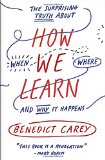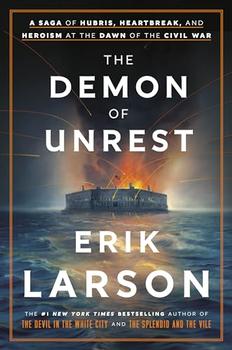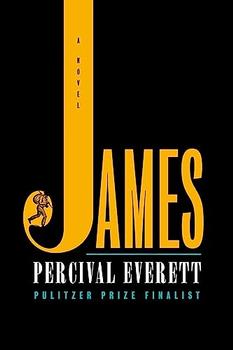Summary | Excerpt | Reviews | Beyond the Book | Readalikes | Genres & Themes | Author Bio

Critics' Opinion:
Readers' Opinion:
First Published:
Sep 2014, 272 pages
Paperback:
Jun 2015, 272 pages
 Book Reviewed by:
Book Reviewed by:
Kate Braithwaite
Buy This Book
•••
Before wading into brain biology, I want to say a word about metaphors. They are imprecise, practically by definition. They obscure as much as they reveal. And they're often self-serving, crafted to serve some pet purpose—in the way that the "chemical imbalance" theory of depression supports the use of antidepressant medication. (No one knows what causes depression or why the drugs have the effects they do.)
Fair enough, all around. Our film crew metaphor is a loose one, to be sure—but then so is scientists' understanding of the biology of memory, to put it mildly. The best we can do is dramatize what matters most to learning, and the film crew does that just fine.
To see how, let's track down a specific memory in our own brain.
Let's make it an interesting one, too, not the capital of Ohio or a friend's phone number or the name of the actor who played Frodo. No, let's make it the first day of high school. Those tentative steps into the main hallway, the leering presence of the older kids, the gunmetal thump of slamming lockers. Everyone over age fourteen remembers some detail from that day, and usually an entire video clip.
That memory exists in the brain as a network of linked cells. Those cells activate—or "fire"—together, like a net of lights in a department store Christmas display. When the blue lights blink on, the image of a sleigh appears; when the reds come on, it's a snowflake. In much the same way, our neural networks produce patterns that the brain reads as images, thoughts, and feelings.
The cells that link to form these networks are called neurons. A neuron is essentially a biological switch. It receives signals from one side and—when it "flips" or fires—sends a signal out the other, to the neurons to which it's linked.
The neuron network that forms a specific memory is not a random collection. It includes many of the same cells that flared when a specific memory was first formed—when we first heard that gunmetal thump of lockers. It's as if these cells are bound in collective witness of that experience. The connections between the cells, called synapses, thicken with repeated use, facilitating faster transmission of signals.
Intuitively, this makes some sense; many remembered experiences feel like mental reenactments. But not until 2008 did scientists capture memory formation and retrieval directly, in individual human brain cells. In an experiment, doctors at the University of California, Los Angeles, threaded filament-like electrodes deep into the brains of thirteen people with epilepsy who were awaiting surgery.
This is routine practice. Epilepsy is not well understood; the tiny hurricanes of electrical activity that cause seizures seem to come out of the blue. These squalls often originate in the same neighborhood of the brain for any one individual, yet the location varies from person to person. Surgeons can remove these small epicenters of activity but first they have to find them, by witnessing and recording a seizure. That's what the electrodes are for, pinpointing location. And it takes time. Patients may lie in the hospital with electrode implants for days on end before a seizure strikes. The UCLA team took advantage of this waiting period to answer a fundamental question.
Each patient watched a series of five- to ten-second video clips of well-known shows like Seinfeld and The Simpsons, celebrities like Elvis, or familiar landmarks. After a short break, the researchers asked each person to freely recall as many of the videos as possible, calling them out as they came to mind. During the initial viewing of the videos, a computer had recorded the firing of about one hundred neurons. The firing pattern was different for each clip; some neurons fired furiously and others were quiet. When a patient later recalled one of the clips, say of Homer Simpson, the brain showed exactly the same pattern as it had originally, as if replaying the experience.
Excerpted from How We Learn by Benedict Carey. Copyright © 2014 by Benedict Carey. Excerpted by permission of Random House, a division of Random House LLC. All rights reserved. No part of this excerpt may be reproduced or reprinted without permission in writing from the publisher.




To make a library it takes two volumes and a fire. Two volumes and a fire, and interest. The interest alone will ...
Click Here to find out who said this, as well as discovering other famous literary quotes!
Your guide toexceptional books
BookBrowse seeks out and recommends the best in contemporary fiction and nonfiction—books that not only engage and entertain but also deepen our understanding of ourselves and the world around us.